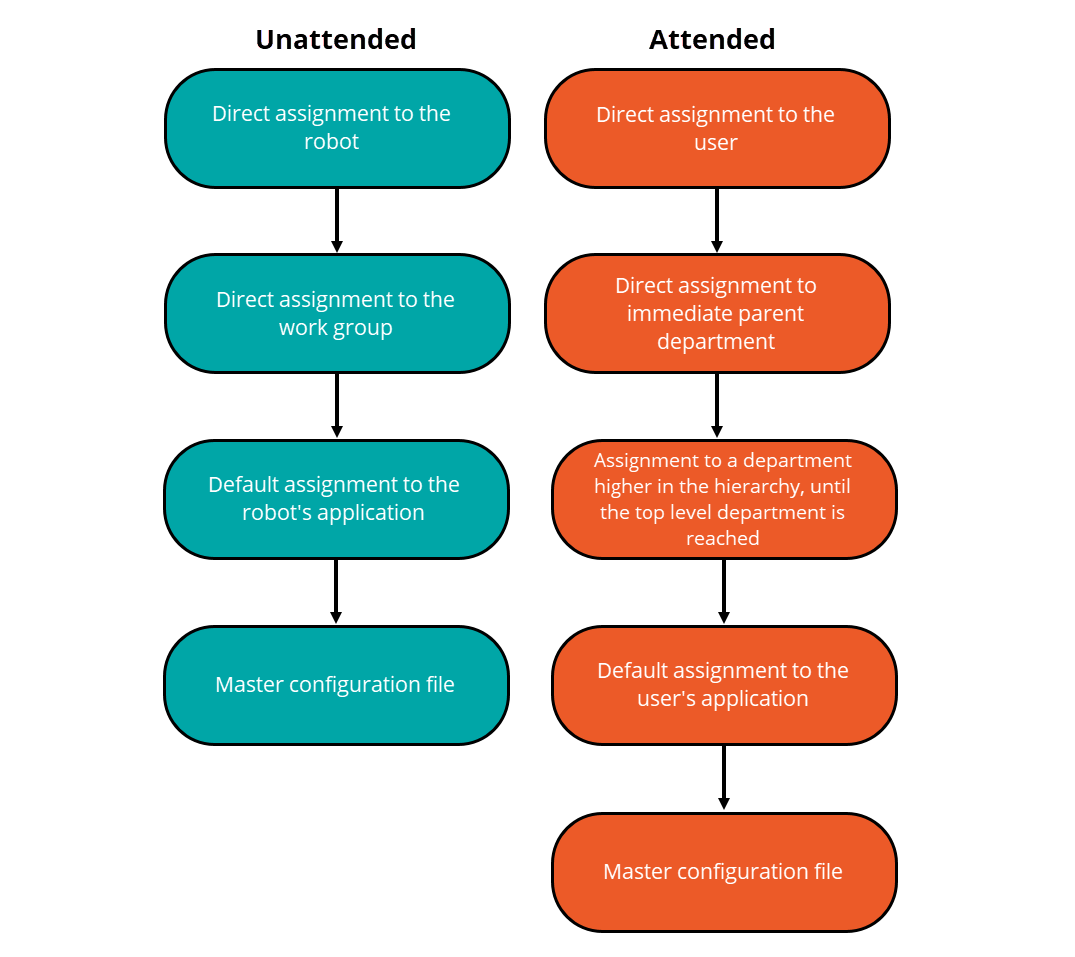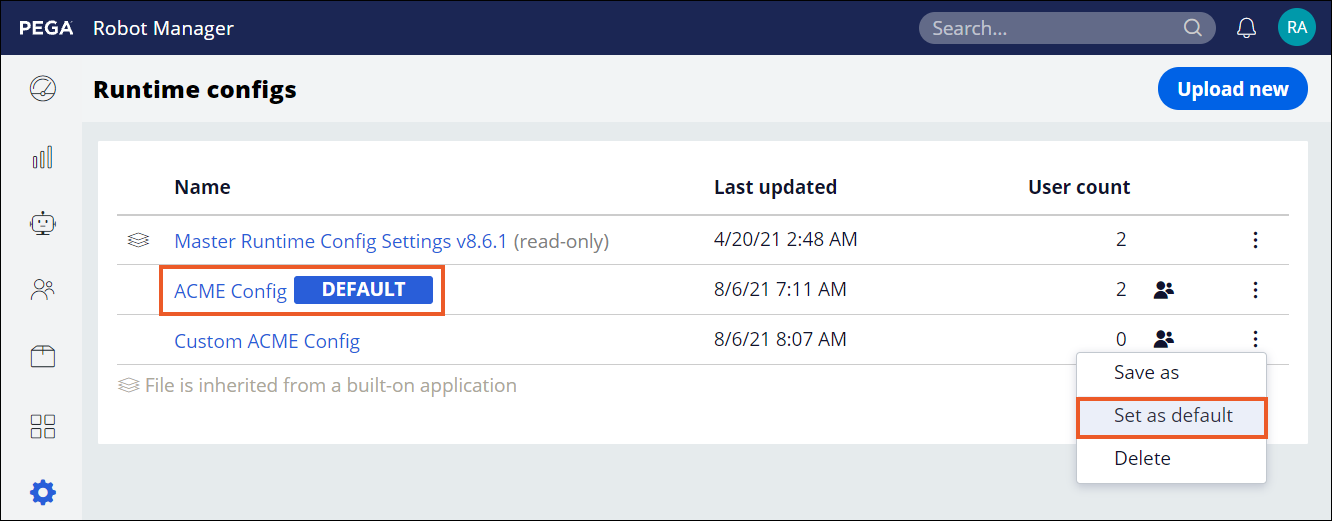Configuration file inheritance
You can create multiple Runtime configuration files within the scope of a single application. When you create a new configuration file, the system decides which Runtime configuration file to apply by using a set of inheritance criteria.
When you create a Robot Manager application, the master configuration file is the default Runtime configuration file. However, you can create multiple Runtime configuration files and assign them to various entities within an application (such as robots, users, work groups, departments, or entire applications), to account for all types of tasks that your robots might need to perform.
To determine which Runtime configuration file to apply, Robot Manager uses an inheritance path in which the direct user or robot assignment always takes precedence. If a user or robot does not have a file directly assigned, Robot Manager reverts to the department or work group assignment. If Robot Manager still does not find a direct assignment, the inheritance path continues until it reaches the master configuration file.
The following figure demonstrates the full Runtime configuration inheritance for
attended and unattended robots:
Entities without a direct Runtime configuration file assignment in your application
use the default file. You can only have one default Runtime configuration file per
application. Out of the box, Robot Manager uses the
master configuration file as the default configuration file. However, you can
specify another file as the default, based on your needs, as shown in the following
example:
Previous topic Managing robot configuration remotely Next topic Creating configuration files in Pega Robot Manager
